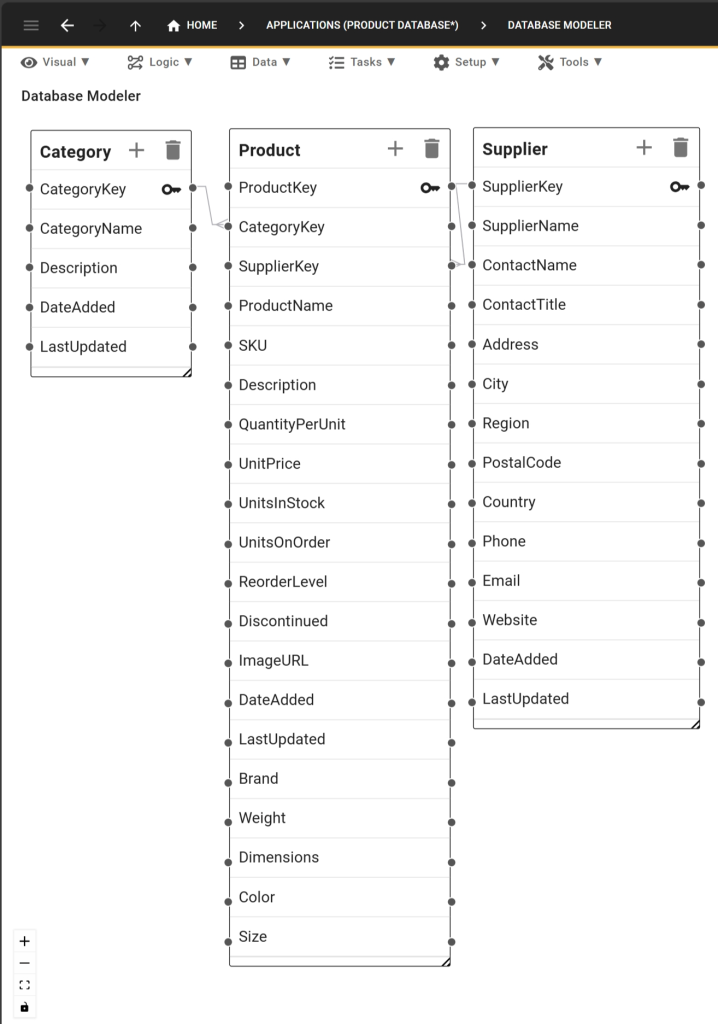Create a Supplier Database In 3 Steps
How to Create a Supplier Database
A supplier database is essential for businesses that rely on multiple vendors to provide goods or services.
It keeps track of supplier details, contract terms, and order histories, serving as the central source of truth for managing supplier relationships. It also lets you compare suppliers, and keep track of their performance and prices, enabling you to make better decisions about whom to select as a supplier.
If you’re unsure where to begin, this guide will walk you through creating an efficient supplier database, helping you avoid issues like missed orders and unreliable supplier tracking.
Let’s dive in and learn how to develop a supplier database.
Why Build a Supplier Database?
A good supplier database is key to smooth purchasing. It helps you:
✅ Keep an eye on how suppliers are doing
✅ Follow up on orders, shipments and deliveries
✅ Handle contracts
✅ Make sure orders arrive on time
Having all your supplier info in one place means everyone’s on the same page. This lets you make smarter choices about who to buy from and how to work with them.
What Is a Supplier Database?
A supplier database stores detailed information or attributes about your vendors, such as supplier names, contact details, contract terms, pricing agreements, minimum order quantities, delivery schedules, and payment terms.
It also helps businesses maintain a clear record of supplier performance, track contract renewal dates, and ensure timely reordering. With a well-structured supplier database, companies can streamline procurement processes, improve supplier relationships, and ensure compliance with agreed terms and quality standards.
Let’s say you’re in charge of buying items for a factory. Your main computer system might handle the basics, like who your suppliers are and what you’ve ordered. But it might not be great at keeping track of all the nitty-gritty details like contract specifics or supplier performance metrics.
That’s where a proper supplier database comes in handy. It’s like a one-stop shop for everything about your suppliers. You can search it easily, and it keeps all the important info in one place. This makes it much easier to keep an eye on how things are going with all your vendors.
Why Spreadsheets Fall Short for Supplier Databases
Let’s face it, many of us start out tracking our suppliers in Excel or Google Sheets. It seems easy at first, especially when you’re just starting. But as your business grows, these spreadsheets can cause some real headaches:
Version Chaos
Before you know it, everyone’s got their copy. You end up with a mess of files like “SupplierList_LATEST,” “Vendor Database – Updated,” “Old Supplier List – IGNORE,” and so on. Who knows which one’s right?
No Clear History
Without a proper system, it’s hard to keep track of who changed what and when. If the person in charge of updates leaves, you might be left scratching your head about why certain changes were made.
Data Gets Messy
People start adding their own notes, highlighting things, and making manual tweaks. Soon enough, you’ve got a rainbow of colors and comments that don’t make sense to anyone else. For example, someone might mark a supplier in red to show they’re unreliable, but others might miss it or misunderstand.
Using spreadsheets for your supplier info goes against the whole point of having one trustworthy source of data. Instead of smoothly managing your suppliers, you end up playing detective with a bunch of conflicting spreadsheets.
Building a real supplier database with a proper tool can solve these problems. It gives you one central place for all your supplier info that everyone can rely on.
Ditch Excel For Better Data Management
Excel or spreadsheets aren’t the right solution for supplier management. What’s a better alternative?
A supplier database with an intuitive web user interface! Check out our supplier database template app for a visual impression of an application developed with Five.
Supplier and Customer Database Template App
Check out our supplier and customer database template application.
This web-based solution is designed to simplify storing and managing customer and supplier contact information and order history. Fully customizable, this ready-to-use database template offers an intuitive interface to centralize supplier and customer data in a fully extendable interface.

Professionalize Your Supplier Management
Five gives you all the essential tools to build and launch a modern supplier database application:
- Access to Five’s rapid development environment.
- A customizable, cloud-hosted MySQL database for storing supplier data.
- A library of pre-configured template applications, ready for use.
Get started with one of our affordable subscription plans or sign up for a free trial first.
Five has a team of experts ready to assist you with your development. So, if you ever feel like you’re in over your head, don’t worry, our expert developers are here to help. And yes, we promise not to charge you an arm and a leg or leave you with a system that only we understand.
To get a free consultation, visit this page: “Hire An Expert.”
How to Create a Supplier Database in 3 Steps
If you’re running a business, you probably don’t have time to become a database expert. Normally, you’d need to fully understand concepts like SQL and how to build user interfaces. That’s a lot to ask when you’re busy keeping your business running.
This is why many small businesses put off creating a proper supplier database. It just seems too complicated and time-consuming. But here’s where tools like Five come in handy. It’s an online database builder that makes creating a supplier database way simpler.
Now, I won’t lie – it’s not as easy as snapping your fingers. But it’s a whole lot easier than spending weeks learning to code from scratch.
With Five, you can:
✅ Quickly set up your supplier database and get a user-friendly interface without any extra work.
✅ It’s easy to import your existing supplier data from Excel or other spreadsheets, so you don’t have to start from scratch.
✅ You can also add custom features like detailed reports about your suppliers and set up charts to help you visualize your data at a glance.
✅ One of the handiest features is the ability to set up alerts that let you know when it’s time to reorder from a supplier, helping you stay on top of your inventory needs.
✅ Plus, apps developed in Five work on any device. So whether you’re at your desk or on the go, you can always check your supplier info.
Want to give it a shot? Here’s how to get started:
1. Sign up for free.
2. Make your own supplier database (or use a template to get started)
3. Add forms to collect the info you need
4. Set up logins for your team, and even for suppliers if you want.
Step 1: What You Need to Know About Your Suppliers
First things first, let’s think about what info you need about your suppliers.
What matters to your business? What do your team and customers care about? You want your supplier database to be the go-to place for all this info, so make it as complete as you can.
Here’s a list of things you might want to keep track of:
- Supplier ID and Name
- What they provide (products or services)
- Their prices
- Any special deals or discounts
- How to contact them
- How long they take to deliver
- Minimum order amounts
- Their location
- Any certifications they have
- How reliable they’ve been
- Payment terms
- Contract details
Step 2: Think About How You Work with Suppliers
Your supplier database isn’t just a list. It should help you manage how you work with suppliers day-to-day. Think about things like:
✅ When you place orders:
Keep track of order dates, what you ordered, and when it’s supposed to arrive.
✅ When items come in:
Note down when deliveries arrive, if everything was there, and if it was all okay.
✅ How you pay:
Record when invoices come in, when you pay them, and any issues that come up.
✅ How well they’re doing:
Keep notes on quality, if they deliver on time, and how easy they are to work with.
The more info you keep, the more useful your database will be. For example, if you want to see which suppliers are the most reliable or give the best prices over time, you’ll need to have been recording that info all along.
Remember, a good supplier database grows with your business. Start with the basics, and you can always add more detail as you go along.
Step 3: Creating Your Supplier Database
With your list of supplier attributes and additional information ready, it’s time to move all of this into a proper database.
To do so, sign up for Five, an online database builder that comes with a simple point-and-click interface for creating relational databases.
Follow our video tutorial to build your database tables, forms, and reports, and start managing your suppliers efficiently.
A Simple Supplier Database Schema
Here’s a simple database schema for a supplier database application:
Product Table
At the core of the database, this table stores information about products and their attributes.
Category Table
This table helps classify products into their respective categories, making it easier to organize and retrieve items.
Supplier Table:
A critical component of the schema, this table links products to their suppliers and enables us to notify suppliers when inventory levels are low.
Each table holds specific information, such as product details, reorder levels, supplier contact information, and product categories, ensuring a comprehensive and organized structure. The relationships between these tables facilitate efficient supplier management.

Supplier Database: Key Features
A Customizable Supplier Database
Using Five’s Table Wizard, we can turn the table and field definitions of our database into working software. Five gives you a user-friendly, point-and-click database design tool that non-technical users can use to rapidly create a custom database. Add as many fields as you wish to your supplier database. The database is fully customizable and runs on MySQL, one of the world’s most popular open-source database technologies.
Simple-to-Use Forms
Next, Five lets us add forms so that we can enter data into our database. Forms enable us to store or retrieve information from our database. In addition, we can create charts, dashboards, or even PDF reports, which are ideal for sharing supplier information or managing supplier performance.
Login Protected and Secure
Securing supplier chain data is paramount for organizations of all sizes. Five comes with a pre-built authentication feature that adds a login screen to your application. For example, every (registered) supplier can have a login to the application to view or edit data. You can also add multi-factor authentication for extra security.
Generate Documents
Five lets you generate documents straight from inside the application. For example, you can easily create monthly reports about supplier performance, and build approval workflows for onboarding new suppliers.
Searchable and Online
The supplier database is searchable and hosted online. It can be accessed by any device and at any time.
Get Started with Five Today
To build your supplier database with Five, sign up for free access and start the process. Once you have signed up, select one of our learning paths to continue your development.
If you need assistance, visit our forum for help from our application development experts.
By following the steps mentioned above, you can create robust and scalable supplier software tailored to your business needs.


